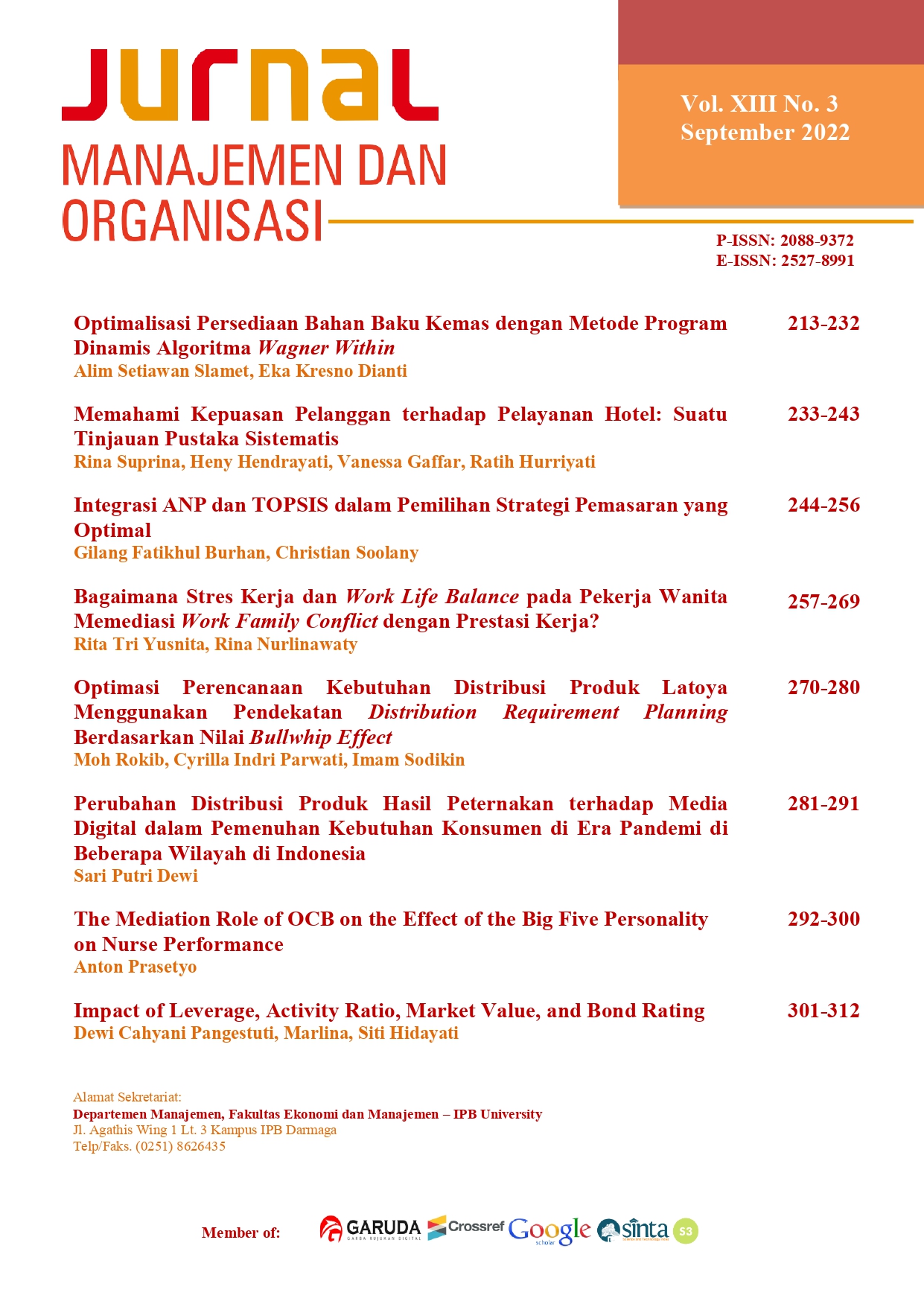Optimasi Perencanaan Kebutuhan Distribusi Produk Latoya Menggunakan Pendekatan Distribution Requirement Planning Berdasarkan Nilai Bullwhip Effect
Abstract
PT KTS is a company in the beverage industry that has three product brands, namely Latoya, Daxu and Banew. The research focuses on Latoya products, because the largest contributor to assets is 70 percent. Inventory planning is done very simply by forecasting based on sales history data at PT KTS to retail, causing a buildup of finished goods in the central warehouse. PT KTS forecasts demand based on retail demand not based on final customer demand to retail. Inventories made are not based on sales to final consumers, resulting in a bullwhip effect. The method used is by applying the Distribution Requirement Planning (DRP), the goal is to calculate the value of BE at PT KTS, BE after DRP and make an order plan based on DRP. The calculation results give a value (BE) before DRP, namely 1,105 retail BJ Home, 4,36 retail Pak Anton, 0,745 retail Bu Ayu, 1,363 retail Depot S.R, 0,903 retail Bu Viska and 0,829 Dadi stores. While the BE value after DRP is 1.00 BJ Home retail, 1,00 Pak Anton retail, 0,84 Bu Ayu retail, 0,71 Sri Rejeki Depot retail, 0,72 Bu Viska retail and 0,88 Dadi shop. Lot Size using the LUC method for all variants in all retails except Latoya 600 ml at retail Pak Anton using EOQ lots with a total cost of Rp. 18.350.257,00.
Downloads
Copyright (c) 2022 Moh Rokib, Cyrilla Indri Parwati, Imam Sodikin

This work is licensed under a Creative Commons Attribution 4.0 International License.


.jpg)




